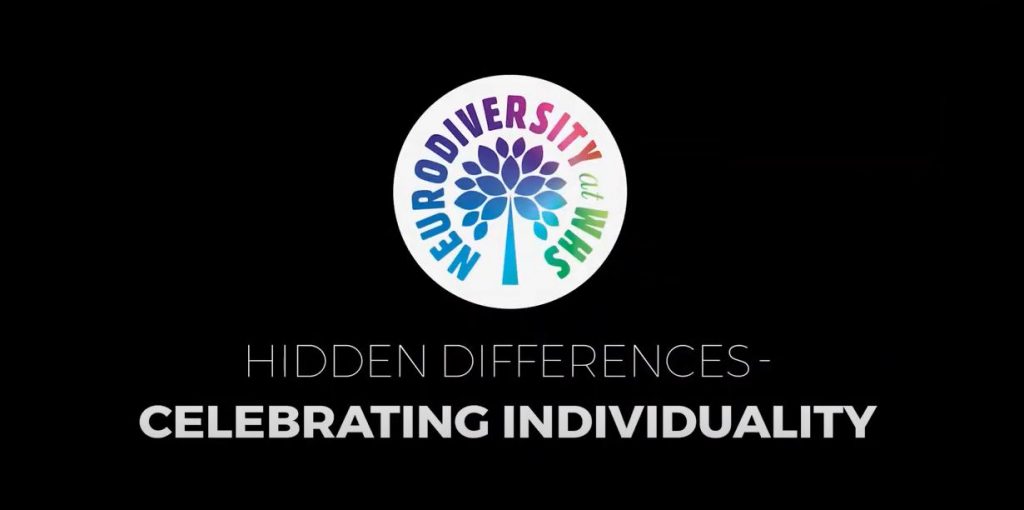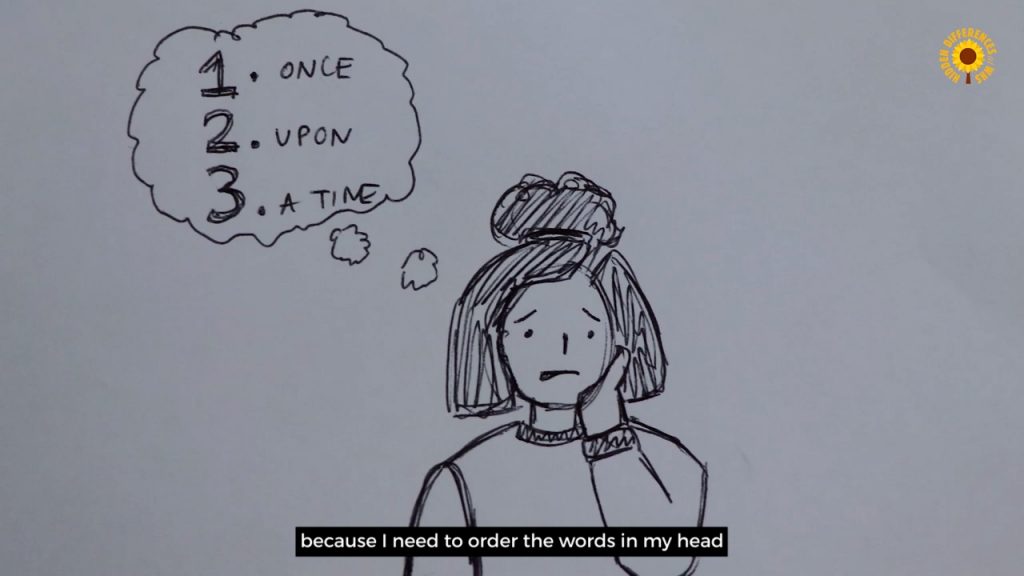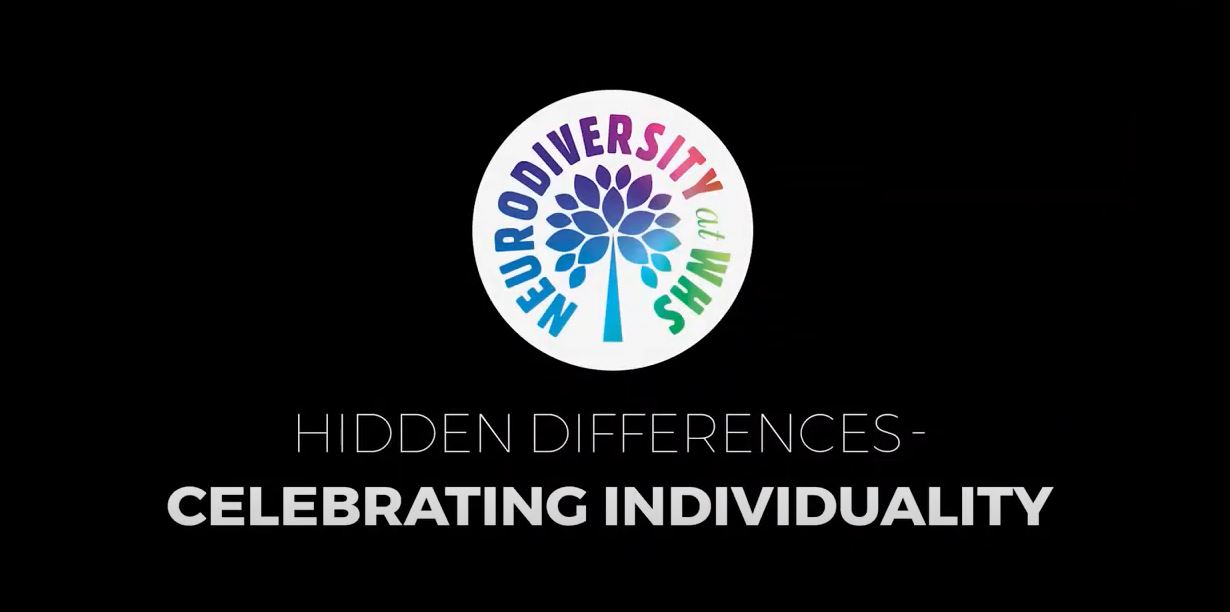Isabelle Alexander, Head of Neurodiversity and Hidden Differences, introduces Project Flip, an initiative created to improve the inclusion of students who are neurodiverse or have hidden differences, and to spread understanding of their experiences

Why Project Flip?
Improved awareness and knowledge of neurodivergent conditions have resulted in an increasing number of students at WHS being identified as being neurodivergent or having hidden differences. This is not surprising as around 18% of the working population consider themselves disabled and the student body at WHS is representative of this.
One of the aims of our school is to build an inclusive community. We promote inclusion and collaboration within our community so that every student can access the teaching approaches and resources they need to achieve their potential. Where all are seen and treated as equals, all have equal opportunities to thrive.
Project Flip set out to increase understanding and acceptance of neurodiversity and hidden differences in the wider community and adapt how we approach teaching, learning and socialisation. By addressing these areas in the school setting, adopting teaching approaches that can reach all students and by making the environment more flexible and adaptable, we would be initiating change in our society as a whole.
How?
The students’ voices had to be at the heart of the project and listening to how our neurodivergent and hidden difference students felt about their educational experience was essential. They are the people with the understanding and knowledge of the difficulties faced daily and equally importantly, they are the people who will be shaping and leading the future. We did not set out with any fixed goals or outcomes in mind, as we hoped that they would develop and emerge organically – and indeed they did.
The project was not, however, without its hurdles. But after a poor start, over a series of weeks, a representative group of hidden difference and neurodivergent students met, agreed some key areas of discussion, and discussed!

What?
The first thing the students concluded was that for change to happen, people needed to care. A video of them speaking, with some of them appearing in it, was created and presented in an assembly to the senior school. This was extremely powerful and made fellow students and teachers more aware about how they experience school and life.
The next step was for them to present the findings of the project to the Senior Leadership Team. They wanted to discuss their shared thoughts, how they felt and what actions they would like to see as a result. This included practical advice for teachers such as the pacing of lessons, ensuring that instructions were written as well as spoken, not drawing attention to their difference, and explicitly letting them know when we (the teachers) were going off on a tangent! Suggestions were made about signage in the school and furnishings in the classrooms. They also asked for a dedicated space where they could find some peace in the day or go to meet. In addition, there was total consensus that when a PHSE session is planned to deal with neurodiversity and hidden differences that there should be self-advocacy and they wanted to be involved.
Outcomes
The impact of this project has already been seen in several ways; during one of our parent forums, parents started spontaneously talking about the assembly video, even though they had not seen it. It had prompted conversations in homes – change was starting to happen.
Our PHSE sessions have changed; we invited a mother and daughter both with ADHD (Attention Deficit Hyperactivity Disorder) to speak about their experiences. They were with us for the entire day, delivering a session to students, a training talk to teachers and finally an ‘in conversation’ information talk to parents that evening. During Autism Awareness Month, two young professional working women visited us and described what their life was like living with autism. Perhaps most effective of all, our Year 9 dyslexic students delivered a talk on dyslexia to the Year 7 students.
We have also held a “Question Time” where a panel of students with hidden differences candidly answered questions that had been sent in advance. The audience of teachers packed the Rutherford theatre. Panellists tackled questions such as: How can teachers make your school experience better? What is the one thing that teachers do that annoys you the most? How can we make the help subtle? How do you feel about going to university or the workplace with a hidden difference?
One of the outcomes that we had not anticipated was the camaraderie that developed within the group. For some, it was the first time, they had not felt alone in their difference. With this in mind, the Neurodiversity and Hidden Differences team will be starting a weekly lunchtime club where students can go informally to chat amongst themselves or for advice. We have also witnessed an increase in confidence our neurodivergent and hidden differences students, as their voices are being heard, awareness is increasing, and perceptions are changing.
This project was only possible because of trust and relationships. It would not have worked had we employed someone externally to run it or if the students had felt that nothing would be done as a result of it.
The future
The findings of the project have already been shared in a number of ways, including presentations at the Global Forum for Girls’ Education in Boston and the GDST Deputy Heads Conference. The Girls’ School Conference have also invited us to present. The momentum behind the idea is growing.
We are only on the start of our journey of increasing awareness, understanding and acceptance and are excited about continuing it from this point.

